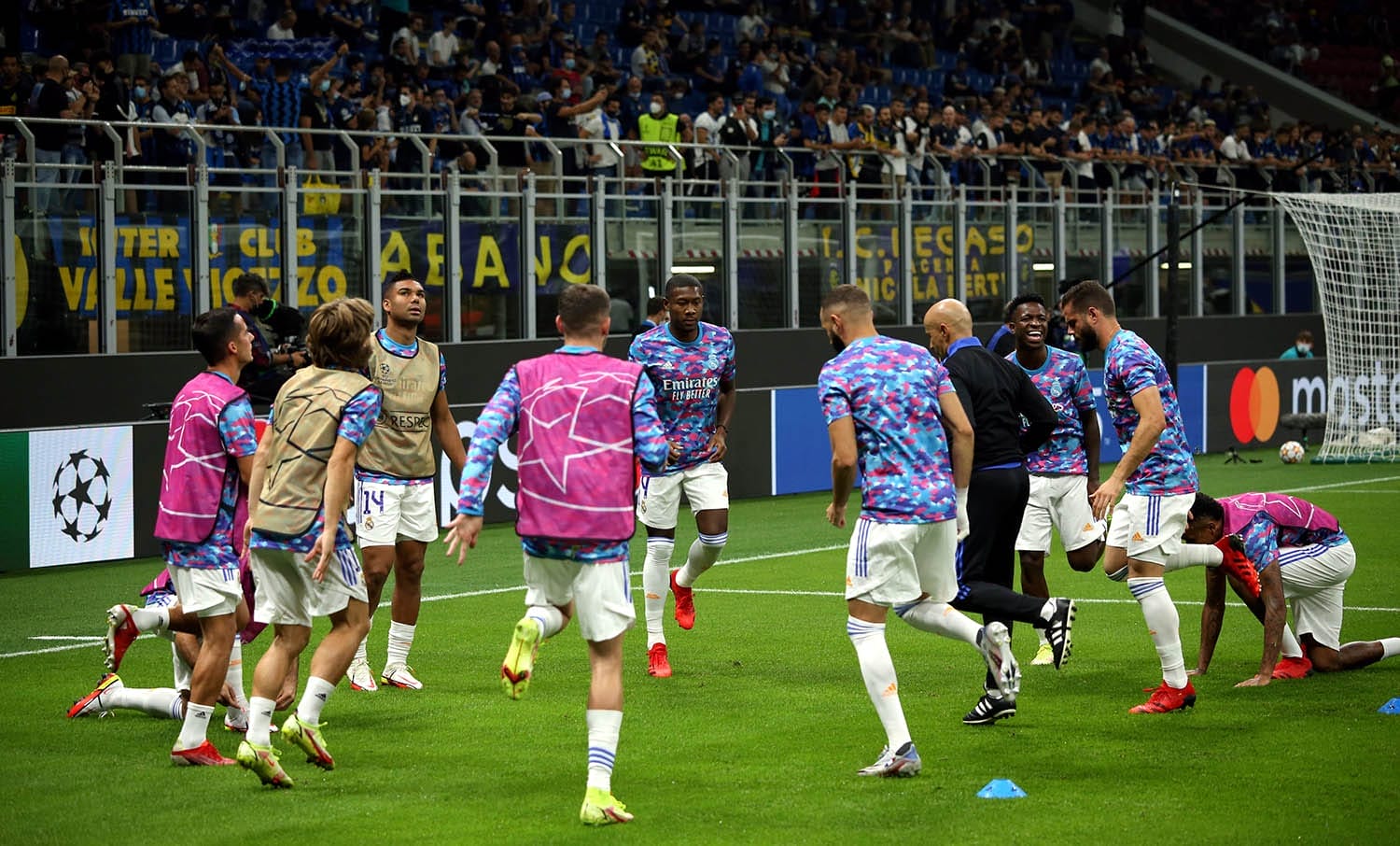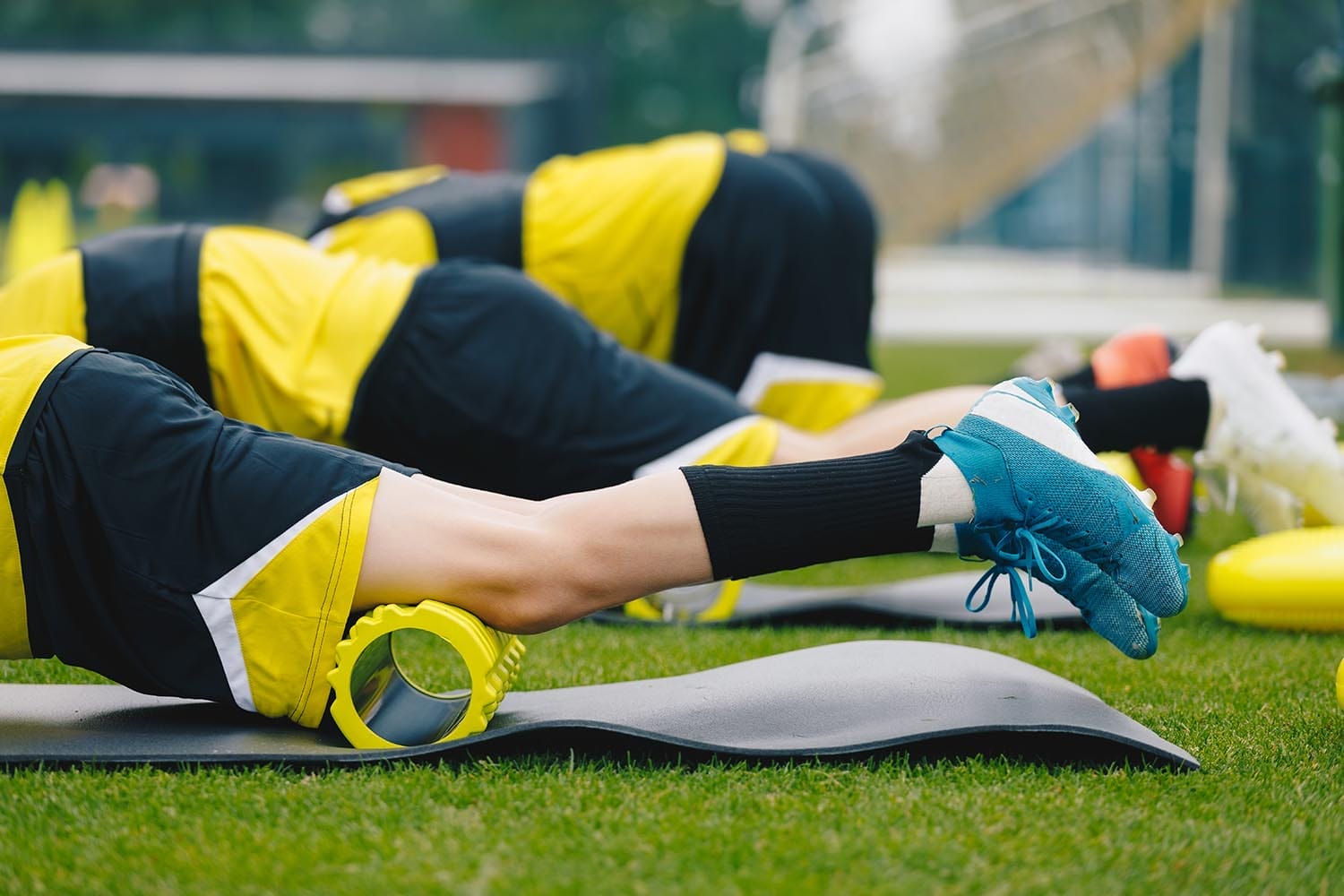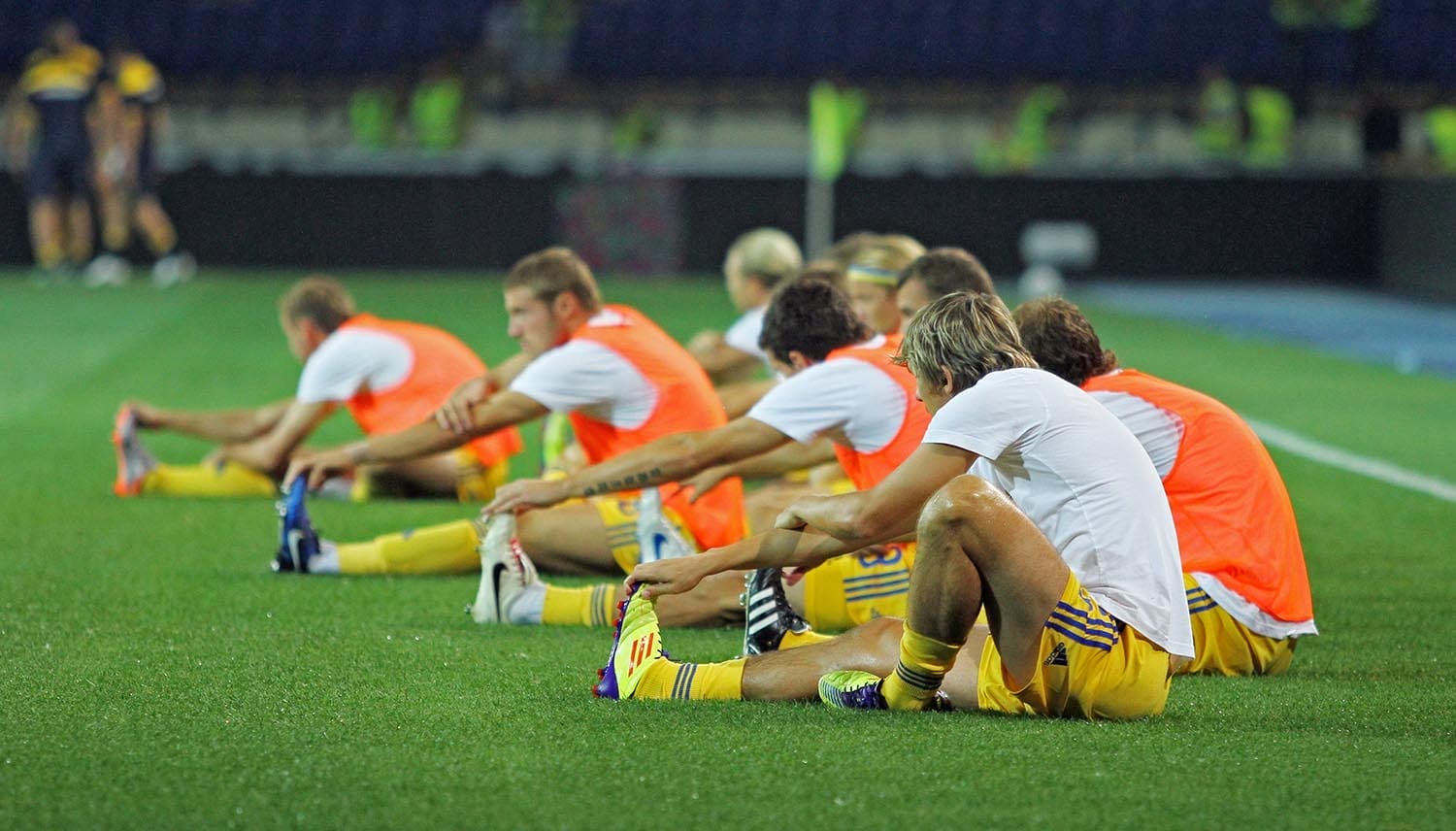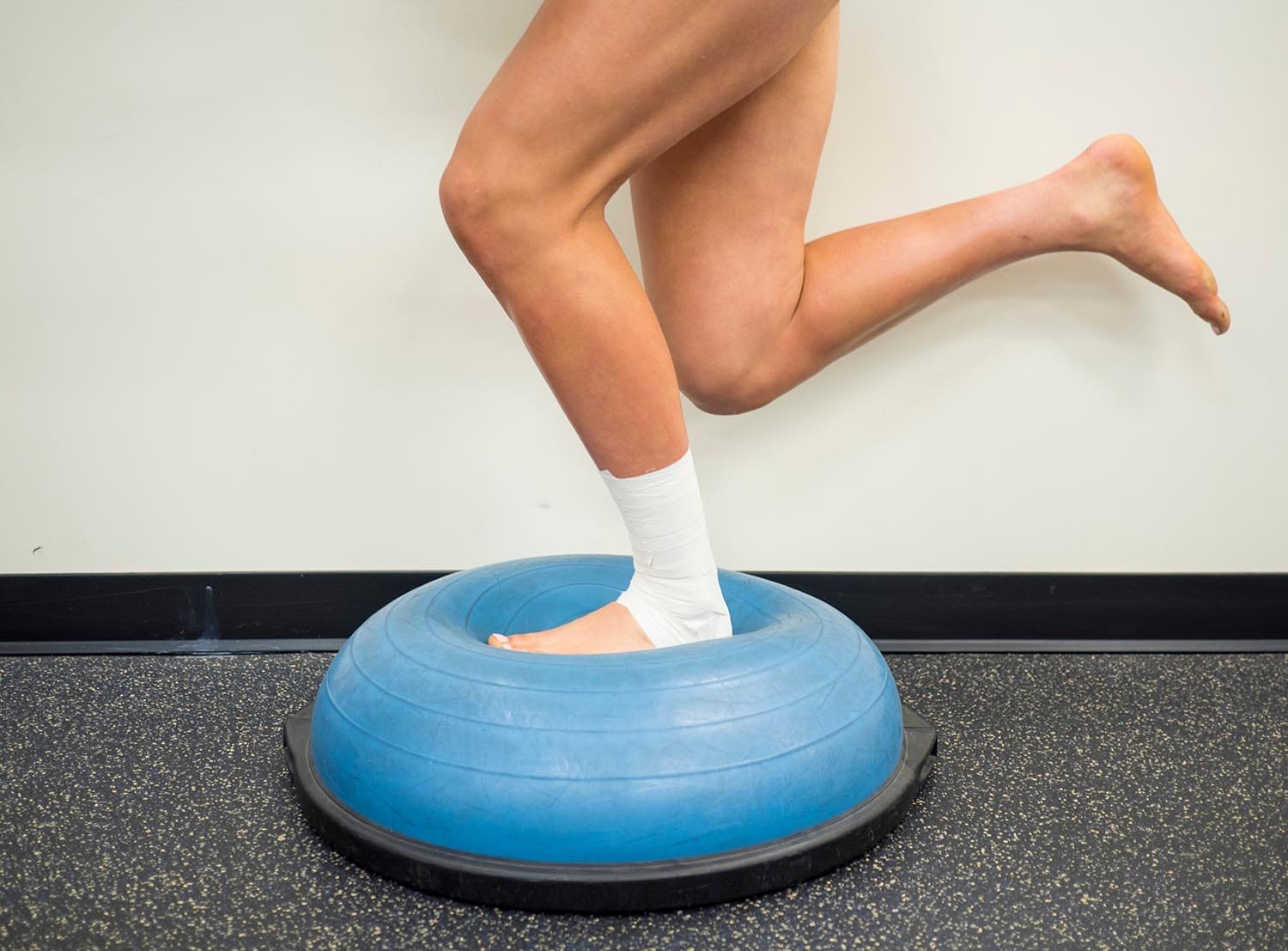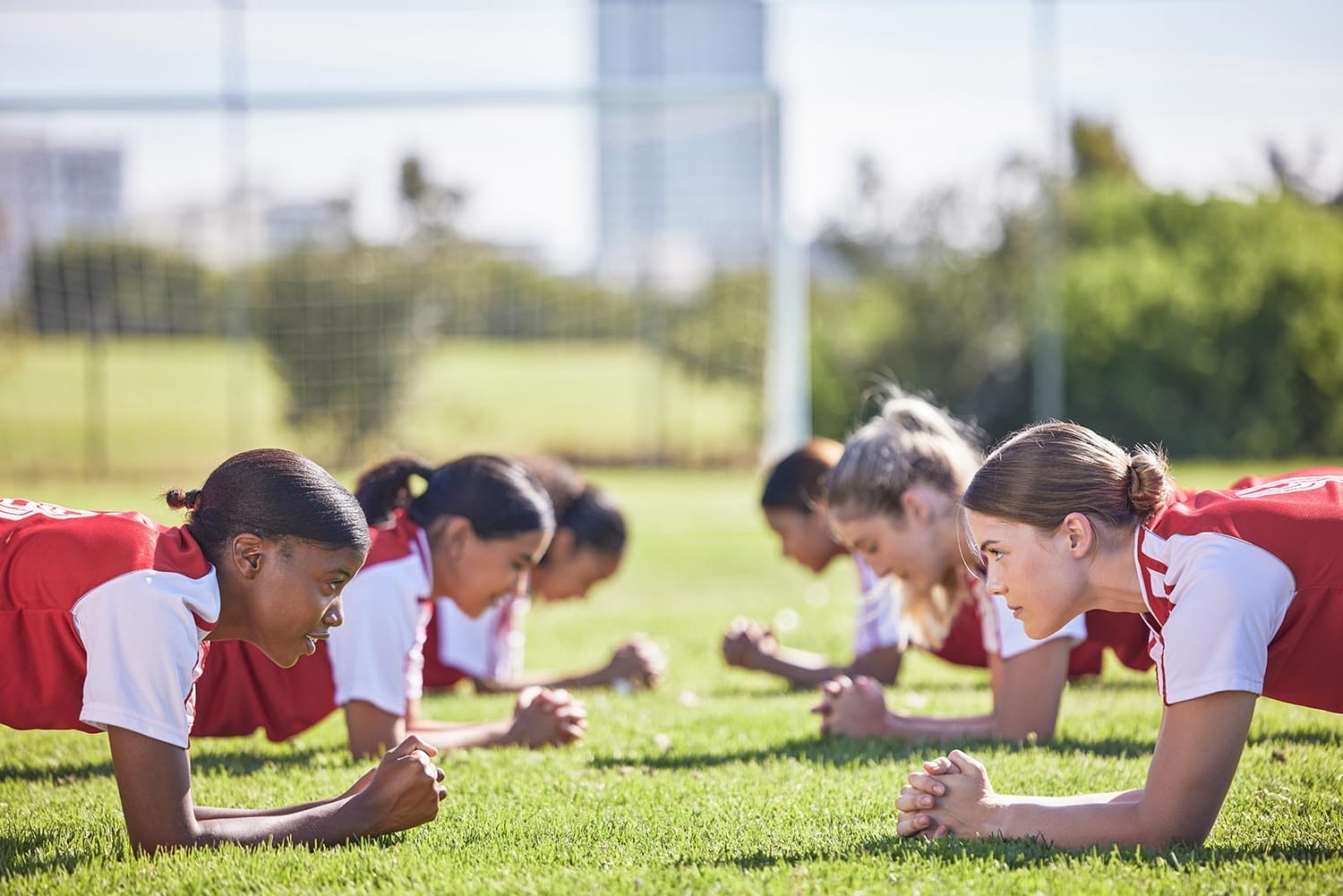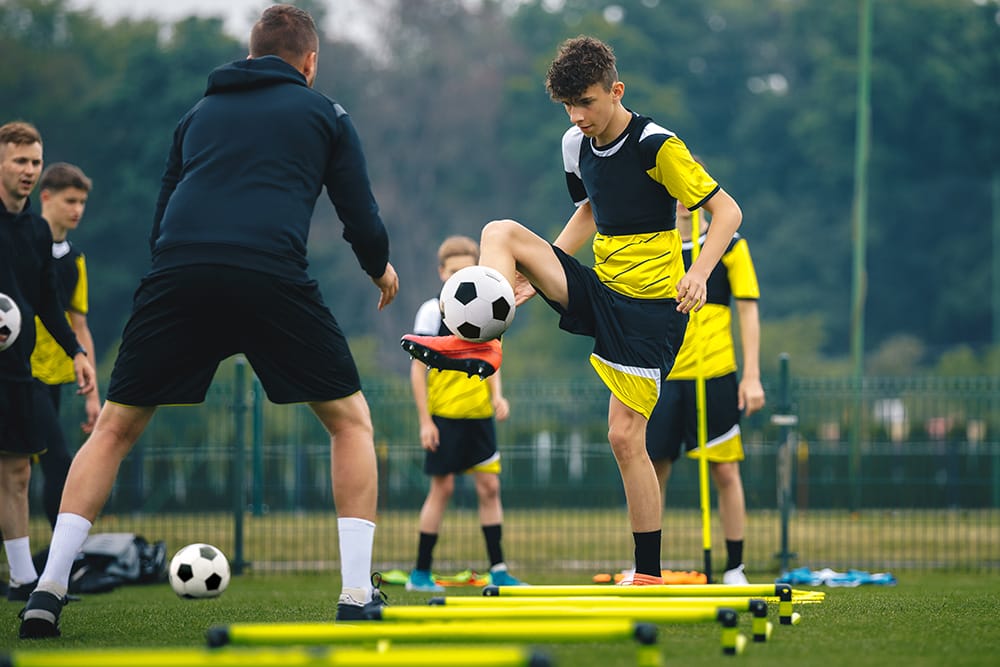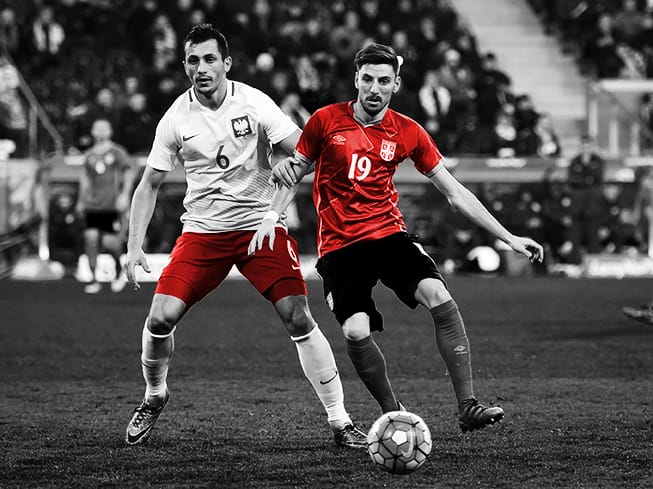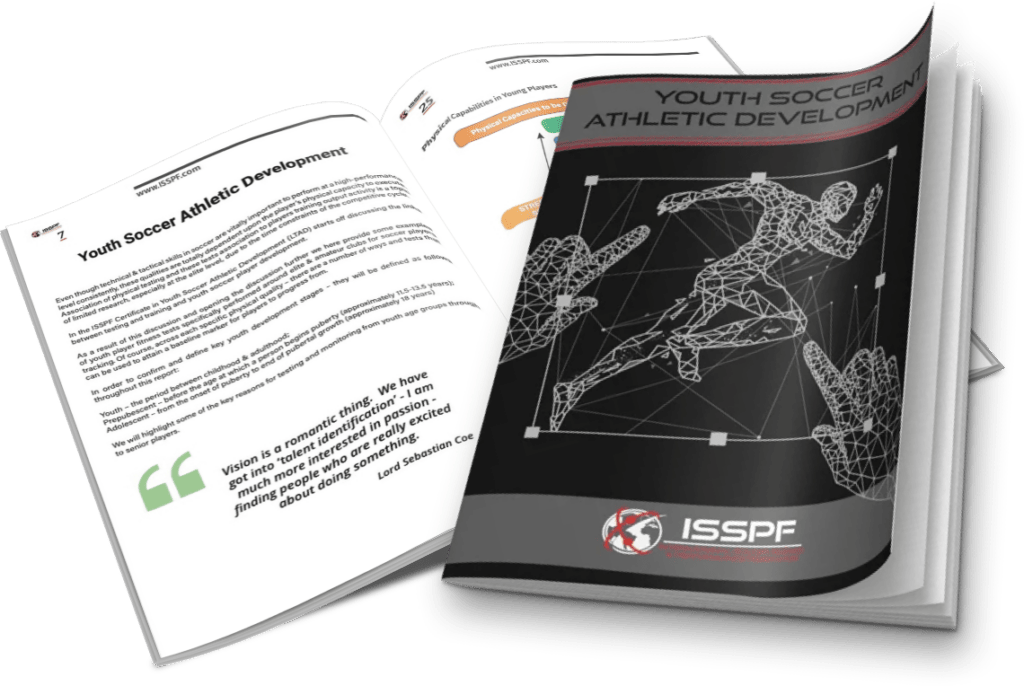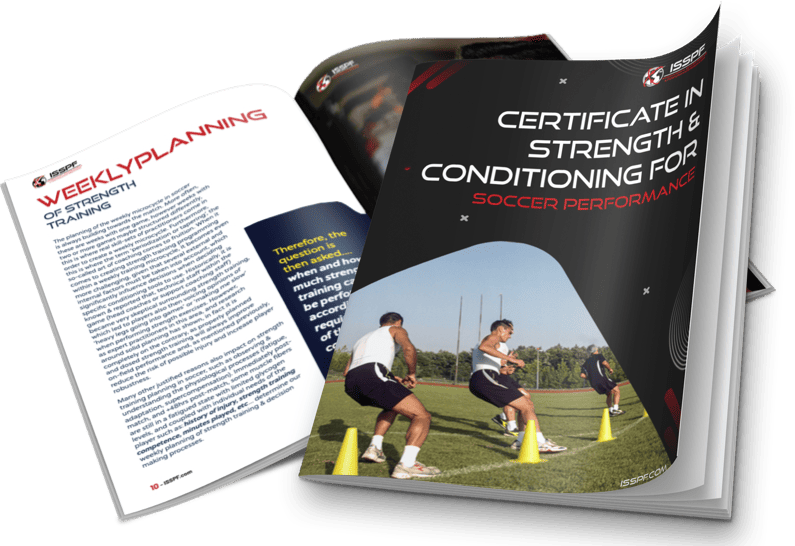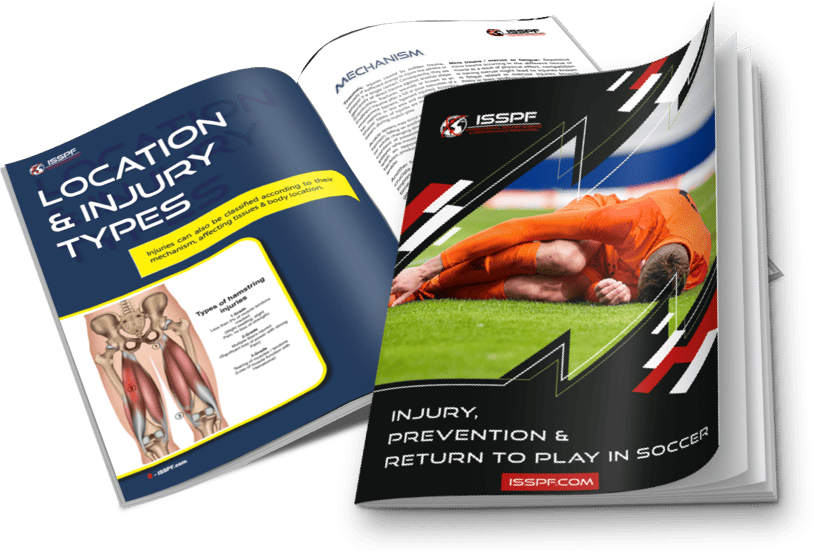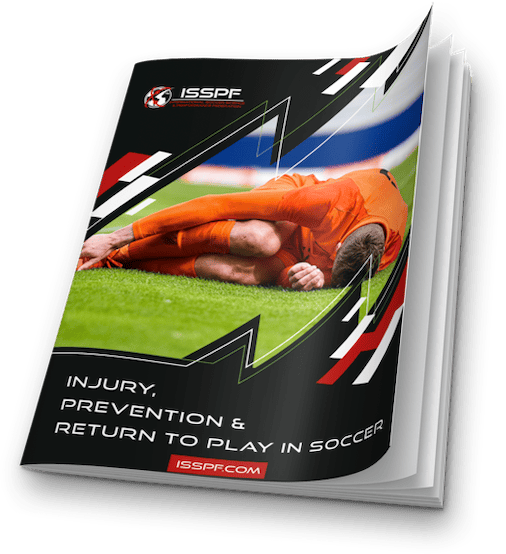Pre-Warm Up Activation & Injury Reduction in Soccer: A strategy to reduce injury risk
Author: Jason Vasileiadis MSc, Head of Performance, Professional Soccer
Football is arguably the most played, watched and generally the most followed or interest-generated sport in the world.
The popularity of the sport continues to rise across the globe, and as a result of both media and streaming avenues over the last few decades, the number of fixtures or games to supply the demanding revenue generation has also increased. As a result of the increased fixture congestive periods and a larger demand for training coupled with less recovery – has subsequently increased injury levels at both professional and amateur championships. (June et al., 2004).
Greater fixture congestive periods significantly influence player health and well-being, consequentially leading football clubs exposed to increased injury rates, & reduced training and playing availability from their squad, directly effecting levels of success.
Nowadays within the modern game, practitioners have evolved as a result of sport science & performance coaching professionalisation.
However, if we as coaches want our clubs to achieve their targets or goals both financially & competitively, it is of paramount importance to continue to convince or educate the decision makers within the teams administration (e.g. technical director, coaches, medical staff) around the importance of modernized interventional practice
How Do Player Injuries Effect a Team Performance?
Scientific literature has demonstrated that there are clear relationships between squad injury rates and overall team performance.
Hagglund et al., (2013) claimed that higher player training and game availability resulted in greater performance in both domestic and European championships shown through improved rankings in the UEFA Season Club Co-efficient. In another similar study, Eirale et al., (2013) suggested that higher player game and training availability is correlated with a higher league championship position, coupled with more goals scored and overall better goal difference.
Thus, clubs who keep their players healthy and fit perform better, probably due to the fact that those better players positively influence team performance, and of course because these so-called ‘better players’ can lead to the lack of team disruption & lend themselves to consistency in team selection and performance, something that can reinforce team connectivity.
Another factor significantly affected through injury is team finances. Studies coming from England (Woods et al., 2002), Switzerland (Junge et al., 2011) and the Netherlands (Letsellast Model, 2008) demonstrated the huge financial cost that football clubs experienced regarding players’ injury.
Not only do scans and operations lead to extensive finances in clubs, but the negative investment or poor return on injured players is a huge proportionate cost to the club (Hickey et al., 2014, Pritchett et al., 1981).
Keeping players healthy is the key to both the financial and performance success of team sport, hence developing a modern injury reduction philosophy within team sport especially football, is fundamental to the clubs operating level.
Injury Prevention Strategies
Applying an injury prevention strategy is something that cannot be described in one article such as this, as the goal for every club should be to build a philosophy based on each football athlete’s individual history in the game, scientific data regarding previous injury in soccer combined with daily training routines and training monitoring.
One general daily training routine that is now commonplace in elite football & may reduce injury by acting as a muscle primer or post-activation potentiation, is an activity known as the pre-warm up activation routine.
This strategy can be delivered as a four-stage routine, where every stage tries to focus on physical imbalances, stiffness, neural stimulation and at the same time is used as an introductory or activation stage before the on-pitch warm up & subsequent main part of the session.
The four stages can be broken into the following phases:
- Foam Rolling
- Mobility
- Core and Lower Body Stability
- Muscle Activation and Prevention Exercises
Foam Rolling
Foam rolling is a form of self-massage that physiotherapists and S&C coaches use as a tactic to increase muscle flexibility.
Athletes use their own body mass on a foam roller and apply direct rolling pressure on the muscle. As a result of that, the soft tissue of the muscle is lengthening and muscle tension that exists is released (Pearcey et al., 2015).
It has been proved from the scientific literature that foam rolling can be used as part of the warm-up, before the stretching stage or as a post-exercise recovery strategy ( Zainuddin et al., 2005; Pearcey et al., 2015; Macdonald et al., 2014).
Sports scientists suggest to roll each muscle approximately 8-10 times and hold the foam roller or the trigger ball over what they call “trigger point” (the point where the pain is harder than the other areas of the muscle). After you release the tension then this can be repeated by rolling the length of the muscle again.
Results from many studies have shown that this strategy may alleviate muscle soreness, reduce delayed onset muscle soreness (DOMS), correct muscle imbalance, improve range of motion (ROM) and neuromuscular efficiency.
Mobility
On this part of pre warm-up activation the athlete performs static and dynamic stretching exercises that focus on the ankle, hip, back & shoulder mobility.
A good range of movement for every joint is linked with better muscle efficiency and as a result of that less muscle strains. (Kugler & Janshen 2010; Mann, 2011). It might be suggested that better ankle mobility results in better technical execution of many exercises, especially strength training actions such as squat, clean & jerk or deadlift.
There are controversial outcomes regarding the application of static stretching exercises and their effect on athletic performance, but the execution of static stretching exercises with duration less than 15 seconds has shown not to influence too negatively the effects of athletic performance (O’Sullivan et al., 2009; Covert et al., 2010; Morrin and Redding, 2013).
Core and Lower Body Stability
The next part of this routine will focus on core and pelvic stability.
Core stability training may help players to remain injury-free in an indirect way, as a strong core minimizes joint loads in all types of activities & movements (Hibbs et al., 2008), not to mention the assistance it offers them to deal with the physical contact that football requires (i.e. duels, 1v1 movements, physical contact).
In addition, a strong and stable core is crucial in providing a foundation for the movement of the upper and lower extremities to support loads and to protect the spinal cord and nerve signals (Wilson et al., 2005).
During this stage we also enable single leg balance exercises known as proprioception training.
Balance training or proprioceptive exercises are considered to be an effective strategy when the aim is to reduce ankle or such like knee or joint sprains of lower extremities. Balance exercises can be a really good way to reduce joint injuries as long as core strength and stability are combined.
This improvement results in fewer subsequent energy leakage and improved force transmission (Wilson et al., 2005).
Muscle Activation and Prevention Exercises
Muscle activation routines are most of the time focussed around engagement of neural stimulation in order to activate the muscles directly used during training sessions or competitive games.
According to scientific literature it has been suggested that these routines aim to increase joint stability, improve the ability to generate optimal muscle firing patterns and finally to improve postural control through stabilising side-to-side imbalances in the lower body extremities (Caraffa et al., 1996; Soderman et al., 2000; Heitkamp et al., 2001). Additionally, it has been proved that these injury reduction programs decrease ankle sprains, potential ACL injuries as well as hamstring injuries (Mandelbaum et al., 2005).
Finally it has been suggested that the implementation of these programs improves stability, technical skills, and movement control (Riva et al., 2016). The exercises used for this section of the injury prevention circuit are usually dynamic joint stability exercises such as low level plyometric exercises, agility drills and sport-specific exercises (Risberg et al., 2001; Mandelbaum et al., 2005; Hewett et al., 2011).
Prevention exercises are usually exercises that focus more on preventing soccer specific injury.
These exercises implemented should be scientifically based & efficiently assist in the reduction of muscle strains in lower body muscles. Exercises used by practitioners around the world usually include eccentric actions with an increasing load every week to improve player’s strength levels.
The Nordic exercises for hamstrings are common place and very well established in literature, the Copenhagen adductor exercise combined with the reverse Nordic for quadriceps overloads are also really good examples of research based exercises used in this stage.
Conclusion
Although lots of resources, research and interest surround the injury in soccer narrative, it is a growing problem that is still increasing in the elite world of soccer.
Many clubs with increased demands of success or financial constraints have to deal with greater performance and financial problems, as high injury rates are correlated with those two aspects.
As a practitioner at the professional level of the game, it is crucial for every club to have an “Injury Prevention or Reduction Philosophy” that can reduce the probabilities of injury happening.
There is zero chance of eradicating them totally, irrespective of the numerous techniques, machines and new methods suggested, however there are many things we can do to build this philosophy in clubs, with one of them being the application of pre-warm up, activation routines as described in this article.
Within this reduction strategy, the focus is placed firmly on the individuals player deficits, through the use of a multi-method approach & scientifically proven research methods.
What is Injury Prevention?
- Injury preventionin a sporting context is an effort to prevent or reduce the severity of athletes, or players’ injuries caused by external & internal factors
- Developing processes & interventions to minimise the risk of injury before they occur, is a key factor when it comes to injury reduction
What is Meant by Return to Play?
- Return-to-Play(RTP) is the decision-making process of returning an injured or ill athlete to practice or competition. This ultimately leads to medical clearance of an athlete for full participation in sport.
- It is the planned, systematic & progressive process of individual & team sport practitioners to ensure safe return to both training & competition.
The demand for sports science, physiotherapists, performance & coaching specialists in football & team sports is growing year upon year. Thousands of students are leaving university with a sport science degree, physio or therapy-related qualification, however many of them asking the key question…
What now? How do I get a job in football? What’s the next step? Which area of sport or football science & medicine do I want to specialise in?
This is certainly an interesting question as progressing from completing a sporting, medical or therapy related degree to then working in professional football & trying to understanding all the key components, and soft skills that come with jobs in football or careers within sport is complex.
As a result, the bespoke courses developed by ISSPF Elite Medical & Football Science Faculty members are a way of further exposing learners, parents, professional coaches, students, or other individuals interested in football science with a thirst to develop & upskill further.
The link below will take you to the hugely popular & expertly designed ISSPF endorsed & accredited Soccer Injury, Prevention & Return to Play online sport science course, where you will be exposed to football medicine & coaching science led research, with practical examples used by the game’s leading practitioners.
Why is This Course Important?
- Provides up-to-date injury analysis, injury reduction processes & modern approaches & insights to individuals tasked with the injury, rehabilitation & return to play process of athletes or team sport players.
- Discusses the most efficient training methods and detailed insights into developing player fitness alongside rehabilitation & training methodologies.
- Gain a better understanding how to maximise the rehabilitation process within the game.
- Learn from industry experts in the area of rehabilitation & return to play protocols.
- Help maximise your decision-making through a better understanding & appreciation of football or soccer rehabilitation.
Who is This Course For?
- Individuals tasked with the responsibility for the management of players from a training, preparation, coaching & rehabilitation perspective.
- Any individual who is working as part of a multi-disciplinary staffing structure within a team or individual sport.
Soccer Injury, Prevention & Return to Play Course
Outline of the Soccer Injury Prevention & Return to Play Course:
Module 1: Injury Analysis in soccer
Lecturer: Dr. Hilary Obert
Module 2: How to implement injury prevention programs within soccer
Lecturer: Dr. Victor Salinas
Module 3: Understanding injury prevention and rehabilitation in soccer
Lecturer: Dr. Juan Carlos Ramos
Module 4: Injury reduction strategies in professional soccer
Lecturer: Dr. Patrick Orme
Module 5: Screening processing in soccer & corrective implementation
Lecturer: Dr. Hilary Obert
Module 6: Nutrition for Injury Phases & Rehabilitation
Lecturer: Faisal Alshawa MSc
Module 7: Injury Prevention in Soccer: Key Strategies & Methods
Lecturer: Aleksa Boskovic MSc
Module 8: Psychology during soccer injury
Lecturer: Dr. Jorge David More Anzola
Module 9: Soccer specific movement preparation: Improving efficiency
Lecturer: Aleksa Boskovic MSc
Module 10: Training Load Management: Performance Optimisation
Lecturer: Dr. Adam Owen
Module 11: ACL Injury Criteria Based Return to Play in Soccer
Lecturer: Dr. Felix Fischer
Module 12: Preparing the Injured player for return to play (RTP)
Lecturer: Matt Newton MSc
Article References
Pearcey GE, Bradbury-Squires DJ, Kawamoto JE, Drinkwater EJ, Behm DG, Button DC. Foam rolling for delayed-onset muscle soreness and recovery of dynamic performance measures. J Athl Train. 2015 Jan;50(1):5-13. doi: 10.4085/1062-6050-50.1.01. Epub 2014 Nov 21. PMID: 25415413; PMCID: PMC4299735.
Zainuddin Z, Newton M, Sacco P, Nosaka K (2005) Effects of massage on delayed-onset muscle soreness, swelling, and recovery of muscle function. J Athl Train 40(3):174–180
Macdonald GZ1, Button DC, Drinkwater EJ, Behm DG.Foam rolling as a recovery tool after an intense bout of physical activity.Med Sci Sports Exerc. 2014 Jan;46(1):131-42.
Kugler, F., & Janshen, L. (2010). Body position determines propulsive forces in accelerated running. Journal of biomechanics, 43(2), 343-348.
Mann, R. (2011). The mechanics of sprinting and hurdling. CreateSpace
Meroni R, Cerri CG, Lanzarini C, Barindelli G, Morte GD, Gessaga V, Cesana GC, De Vito G. Comparison of active stretching technique and static stretching technique on hamstring flexibility. Clin J Sport Med. 2010 Jan;20(1):8–14.
Amiri-Khorasani M, Abu Osman NA, Yusof A. Acute effect of static and dynamic stretching on hip dynamic range of motion during instep kicking in professional soccer players. J Strength Cond Res.2011 Jun;25(6):1647–52
Aguilar AJ, DiStefano LJ, Brown CN, Herman DC, Guskiewicz KM, Padua DA. A dynamic warm-up model increases quadriceps strength and hamstring flexibility. J Strength Cond Res. 2012 Apr;26(4):1130–41.
O’Sullivan K, Murray E, Sainsbury D. The effect of warm-up, static stretching and dynamic stretching on hamstring flexibility in previously injured subjects. BMC Musculoskelet Disord. 2009 Apr;10:37
Covert CA, Alexander MP, Petronis JJ, Davis DS. Comparison of ballistic and static stretching on hamstring muscle length using an equal stretching dose. J Strength Cond Res. 2010 Nov;24(11):3008–14.
Morrin N, Redding E. Acute effects of warm-up stretch protocols on balance, vertical jump height, and range of motion in dancers. J Dance Med Sci. 2013;17(1):34–40
Wilson JD, Dougherty CP, Ireland ML and Davis IM. Core stability and it’s relationship to lower function and injury. J Am Acad Orthop Sur. 2005 ;13 (5):316-325
Caraffa A, Cerulli G, Projetti M, Aisa G, Rizzo A Prevention of anterior cruciate ligament injuries in soccer. A prospective controlled study of proprioceptive training
Soderman K, Werner S, Pietila T, et al. Balance board training: prevention of traumatic injuries of the lower extremities in female soccer players? Knee Surg Sports Traumatol Arthrosc. 2000;8:356–363
Heitkamp HC, Horstmann T, Mayer F, Weller J, Dickhuth HH Gain in strength and muscular balance after balance training.Int J Sports Med. 2001 May; 22(4):285-90
Mandelbaum BR, Silvers HJ, Watanabe D, et al. Effectiveness of a neuromuscular and proprioceptive training program in preventing anterior cruciate ligament injuries in female athletes: two-year follow-up. Am J Sports Med. 2005;33:1003–1010.
Risberg MA, Mørk M, Jenssen HK, Holm Design and implementation of a neuromuscular training program following anterior cruciate ligament reconstruction. J Orthop Sports Phys Ther. 2001 Nov; 31(11):620-31
Hewett TE, Myer GD The mechanistic connection between the trunk, hip, knee, and anterior cruciate ligament injury.Exerc Sport Sci Rev. 2011 Oct; 39(4):161-6.
Share this article:
